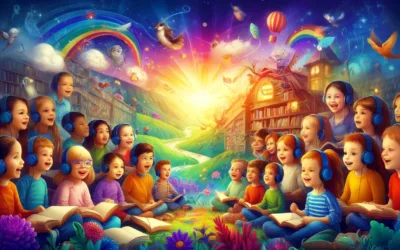Discover the differences between standard audiobooks & dramatised audiobooks
Audiobooks have become a staple for literature lovers worldwide, offering a versatile way to enjoy books whether you’re commuting, doing household chores, or simply relaxing. The audiobook market offers a plethora of options, but two distinct formats stand out: standard audiobooks and dramatised audiobooks. Understanding the differences between these two can help listeners choose the format that best suits their preferences.
Standard Audiobooks
Standard audiobooks are essentially the audio version of reading a book. A single narrator reads the text, providing a straightforward recounting of the book’s content. This format is highly popular due to its simplicity and the personal connection it can create between the listener and the narrator. It mirrors the experience of reading a book traditionally but allows for multitasking or enjoying literature in situations where reading a physical book would be impractical.
One of the main advantages of standard audiobooks is the consistency of voice, which can offer a seamless and uninterrupted listening experience. The narrator plays a pivotal role in conveying the story’s tone, character emotions, and the overall atmosphere of the book. Skilled narrators can shift their voice slightly to represent different characters or emotions, but the narrative remains primarily in one voice, providing a coherent and continuous delivery of the story.
Dramatised Audiobooks
Dramatised audiobooks, on the other hand, offer a more elaborate production. They feature a cast of actors for the characters, along with sound effects and music, to create a more immersive listening experience. This format is akin to radio plays or audio dramas, where the emphasis is on creating a vivid auditory environment that brings the story to life.
The inclusion of multiple voice actors introduces a dynamic range of vocal talents and character portrayals, making it easier for listeners to distinguish between characters and become more engaged in the narrative. The background music and sound effects add layers of depth to the storytelling, offering an enriched experience that can transport the listener to the setting of the book, whether it’s a bustling city street, a quiet countryside, or a fantastical world.
Dramatised audiobooks are particularly well-suited for stories with extensive dialogue, complex character interactions, or those that benefit from atmospheric enhancement through soundscapes. The production value of these audiobooks is typically higher than that of standard audiobooks due to the involvement of a larger creative team and the need for more sophisticated sound design.
Choosing Between Standard and Dramatised Audiobooks
The choice between standard and dramatised audiobooks depends on personal preference and the type of listening experience one is seeking. Standard audiobooks offer a more intimate and reflective experience, where the listener’s imagination plays a key role in visualising the story. This format is ideal for those who appreciate the nuance of a single narrator’s voice bringing a story to life and who enjoy the simplicity of the storytelling.
Dramatised audiobooks, with their full-cast recordings and sound production, provide a more engaging and lively listening experience. They are suited for listeners who prefer a more theatrical and vivid representation of the story, where the audio production adds an extra dimension to the narrative. This format can make the story more accessible, especially for complex narratives with multiple characters, or for listeners who find it easier to follow a story with distinct voices and sound cues.
The Impact of Format on Storytelling
The format of an audiobook can significantly impact the storytelling experience. Standard audiobooks rely heavily on the skill of the narrator to convey the subtleties of the text, including the author’s tone, the characters’ personalities, and the setting’s ambiance. The narrator’s interpretation of the text can influence the listener’s perception of the story, making the choice of narrator crucial.
In contrast, dramatised audiobooks offer a collaborative interpretation of the story, with each actor contributing to the portrayal of their character and the overall mood of the book. The sound effects and music play a crucial role in setting the scene and evoking emotions, providing a more guided and cinematic experience.
Ultimately, the decision between standard and dramatised audiobooks comes down to what one values most in their listening experience. Whether it’s the intimate connection with a single narrator or the immersive experience of a full-cast production, both formats offer unique ways to enjoy literature. As the audiobook industry continues to grow and evolve, listeners can look forward to an ever-expanding library of options, catering to a wide range of tastes and preferences.




